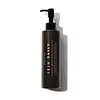What's inside
What's inside
 Benefits
Benefits

 Concerns
Concerns

 Ingredients Side-by-side
Ingredients Side-by-side

Water
Skin ConditioningTriethylhexanoin
MaskingDipropylene Glycol
HumectantIsononyl Isononanoate
EmollientEthylhexyl Palmitate
EmollientGlycerin
HumectantPentylene Glycol
Skin ConditioningPolyglyceryl-10 Diisostearate
EmulsifyingPolyglyceryl-10 Stearate
Skin ConditioningLimnanthes Alba Seed Oil
Skin ConditioningIsopropyl Palmitate
EmollientPrunus Yedoensis Flower Extract
HumectantSasa Quelpaertensis Extract
Skin ConditioningSciadopitys Verticillata Branch/Leaf Extract
Skin ConditioningScutellaria Baicalensis Root Extract
AstringentBehenyl Alcohol
EmollientPolyglyceryl-2 Laurate
EmulsifyingArginine
MaskingHydroxyethylcellulose
Emulsion StabilisingAcrylates/C10-30 Alkyl Acrylate Crosspolymer
Emulsion StabilisingDipotassium Glycyrrhizate
HumectantParfum
MaskingButylene Glycol
HumectantSodium Methyl Cocoyl Taurate
CleansingPropanediol
SolventCarbomer
Emulsion Stabilising1,2-Hexanediol
Skin ConditioningPentasodium Pentetate
Limonene
PerfumingWater, Triethylhexanoin, Dipropylene Glycol, Isononyl Isononanoate, Ethylhexyl Palmitate, Glycerin, Pentylene Glycol, Polyglyceryl-10 Diisostearate, Polyglyceryl-10 Stearate, Limnanthes Alba Seed Oil, Isopropyl Palmitate, Prunus Yedoensis Flower Extract, Sasa Quelpaertensis Extract, Sciadopitys Verticillata Branch/Leaf Extract, Scutellaria Baicalensis Root Extract, Behenyl Alcohol, Polyglyceryl-2 Laurate, Arginine, Hydroxyethylcellulose, Acrylates/C10-30 Alkyl Acrylate Crosspolymer, Dipotassium Glycyrrhizate, Parfum, Butylene Glycol, Sodium Methyl Cocoyl Taurate, Propanediol, Carbomer, 1,2-Hexanediol, Pentasodium Pentetate, Limonene
 Reviews
Reviews

Ingredients Explained
These ingredients are found in both products.
Ingredients higher up in an ingredient list are typically present in a larger amount.
Carbomer is a polymer of acrylic acid. Its main role is to create a gel consistency.
A high amount of carbomer can cause pilling or balling up of products. Don't worry, most products contain 1% or less of carbomer.
Dipropylene Glycol is a synthetically created humectant, stabilizer, and solvent.
This ingredient helps:
Dipropylene glycol is technically an alcohol, but it belongs to the glycol family (often considered part of the ‘good’ alcohols). This means it is hydrating and gentle on skin unlike drying solvent alcohols like denatured alcohol.
As a masking agent, Dipropylene Glycol can be used to cover the smell of other ingredients. However, it does not have a scent.
Studies show Dipropylene Glycol is considered safe to use in skincare.
Learn more about Dipropylene GlycolEthylhexyl Palmitate, also known as octyl palmitate, is created from 2-ethylhexyl alcohol and palmitic acid. It is a fatty acid ester.
The fatty acid content of Ethylhexyl Palmitate makes it an emollient. Emollients help soften and hydrate your skin by trapping moisture within.
Ethylhexyl Palmitate is also used to help improve the texture of cosmetics. It helps other ingredient dissolve in products and help disperse ingredients more evenly.
You'll likely find this ingredient in sunscreen, as it is often used to mix UV-blocking ingredients such as avobenzone and ethylhexyl triazone.
It can also help stabilize the fragrances in a product as a fragrance fixative.
Ethylhexyl Palmitate can be used to substitute mineral oil.
Due to its high fatty acid content, it may not be fungal-acne safe.
Learn more about Ethylhexyl PalmitateGlycerin is already naturally found in your skin. It helps moisturize and protect your skin.
A study from 2016 found glycerin to be more effective as a humectant than AHAs and hyaluronic acid.
As a humectant, it helps the skin stay hydrated by pulling moisture to your skin. The low molecular weight of glycerin allows it to pull moisture into the deeper layers of your skin.
Hydrated skin improves your skin barrier; Your skin barrier helps protect against irritants and bacteria.
Glycerin has also been found to have antimicrobial and antiviral properties. Due to these properties, glycerin is often used in wound and burn treatments.
In cosmetics, glycerin is usually derived from plants such as soybean or palm. However, it can also be sourced from animals, such as tallow or animal fat.
This ingredient is organic, colorless, odorless, and non-toxic.
Glycerin is the name for this ingredient in American English. British English uses Glycerol/Glycerine.
Learn more about GlycerinWater. It's the most common cosmetic ingredient of all. You'll usually see it at the top of ingredient lists, meaning that it makes up the largest part of the product.
So why is it so popular? Water most often acts as a solvent - this means that it helps dissolve other ingredients into the formulation.
You'll also recognize water as that liquid we all need to stay alive. If you see this, drink a glass of water. Stay hydrated!
Learn more about Water